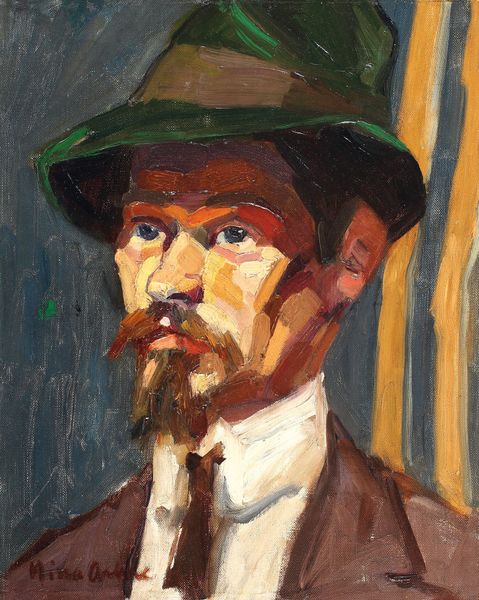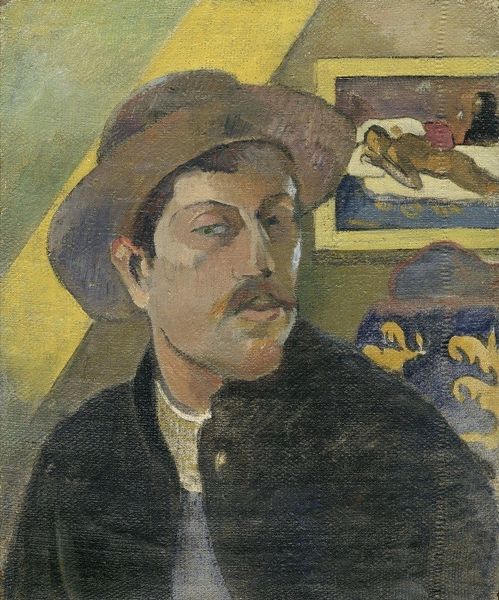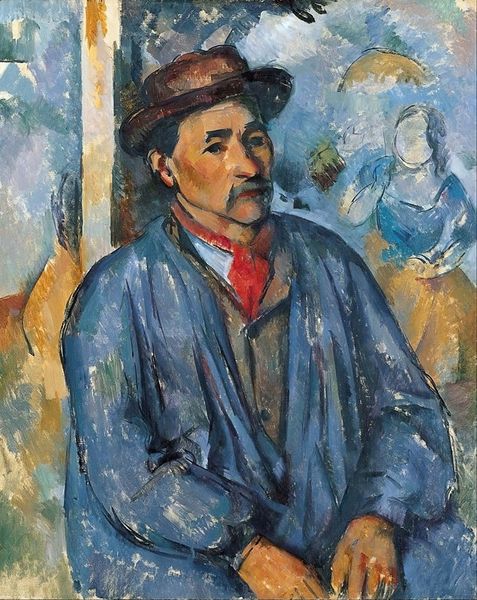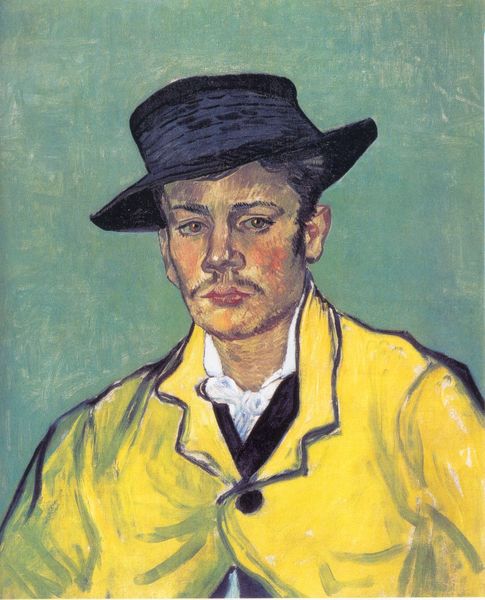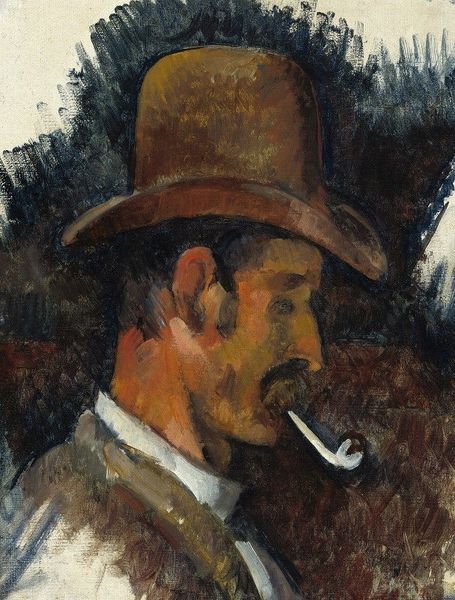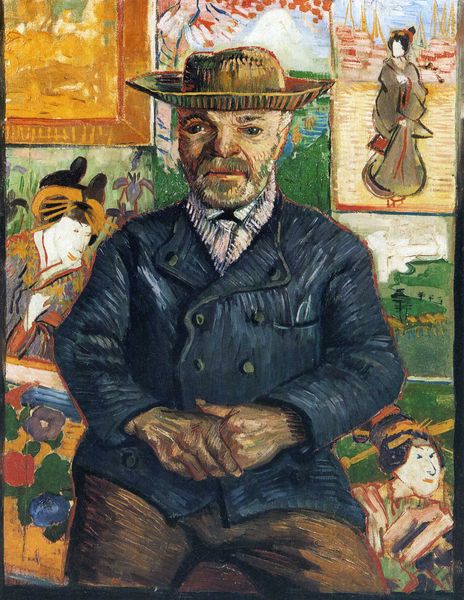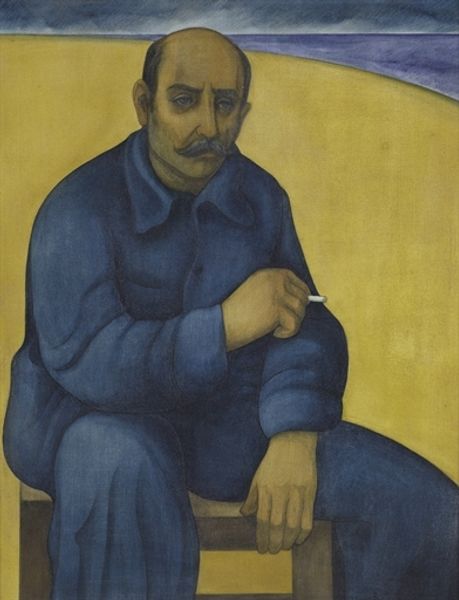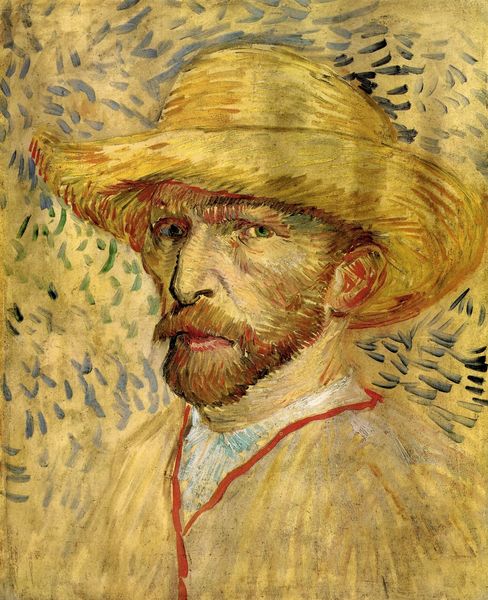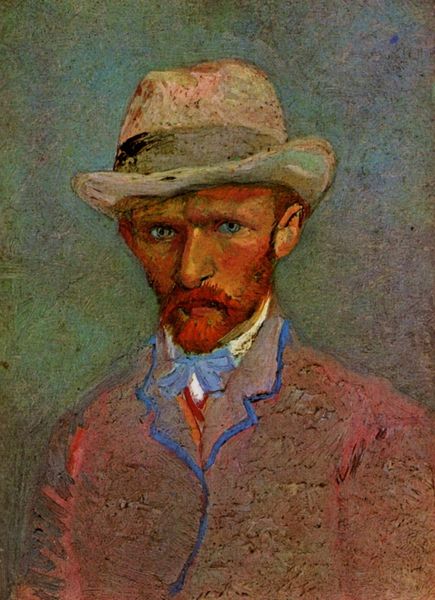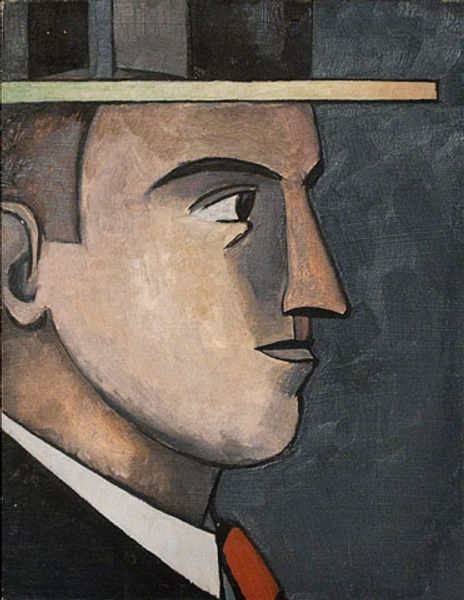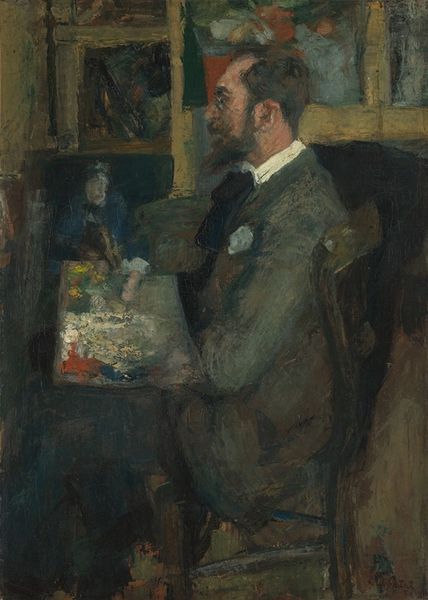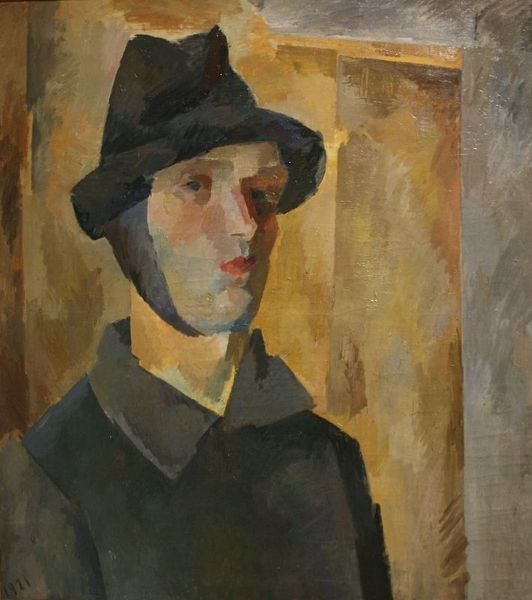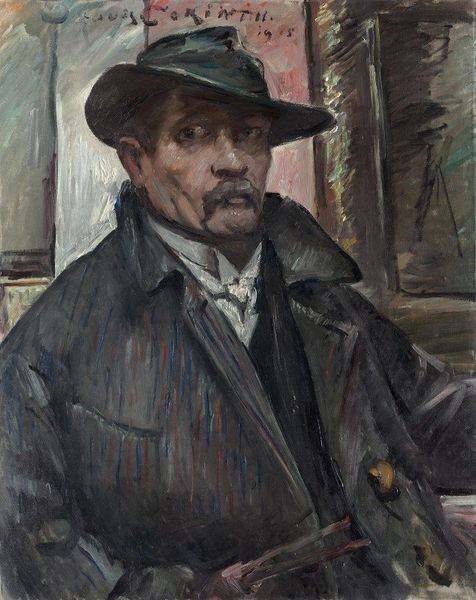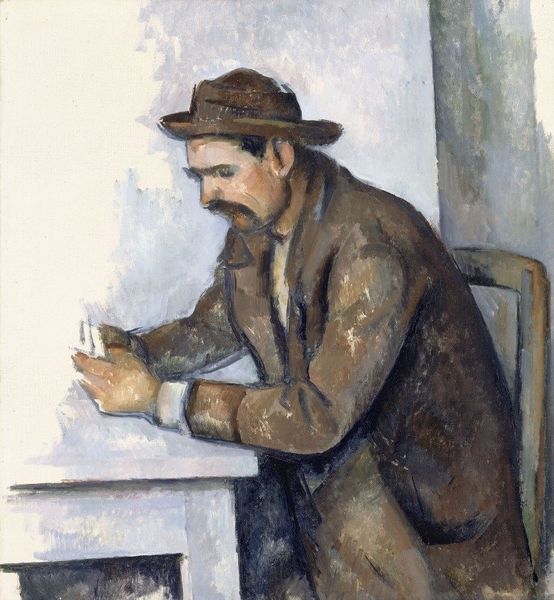
painting, oil-paint
#
portrait
#
figurative
#
self-portrait
#
painting
#
impressionism
#
oil-paint
#
oil painting
#
intimism
#
underpainting
#
post-impressionism
#
portrait art
Copyright: Public Domain: Artvee
Here we see Emile Bernard’s “Self-Portrait with Portrait of Gauguin”. The composition, with its juxtaposed portraits, creates a dialogue between self and other, artist and subject. Bernard's self-representation occupies the left side of the canvas, his gaze direct and engaging. The portrait of Gauguin, hanging on the wall, is rendered in a more muted palette. The flatness of the picture plane, combined with the simplification of forms, reflects a move away from traditional perspective. Bernard uses a limited range of hues, primarily blues and earth tones, which serves to unify the composition. This restricted palette, reminiscent of Cloisonnism, emphasizes the symbolic qualities of color. It invites a semiotic reading, where the formal elements function as signs within a system of representation. The painting challenges conventional notions of portraiture, highlighting the constructed nature of identity. The artwork embodies the spirit of artistic experimentation and intellectual exchange that defined the Post-Impressionist era. Its enduring impact lies in its ability to question the boundaries between self-expression and representation.
Comments
No comments
Be the first to comment and join the conversation on the ultimate creative platform.
